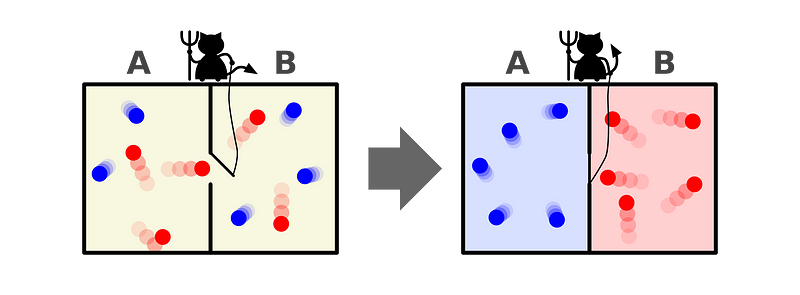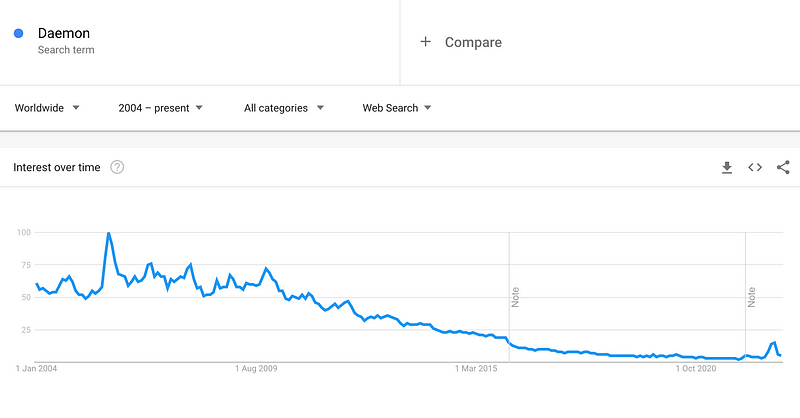Why Are There Daemons on My Computer? Exploring Their Origins
Written on
Understanding Daemons in Computing
If you've ever explored the inner workings of your computer, you may have stumbled upon programs labeled as “daemons.” This might have led you to wonder: why do I have daemons on my computer? Is my system somehow compromised? Is this the reason why developers port DOOM to so many platforms, allowing the Doom Guy to eliminate these supposed hellish entities? What does thermodynamics have to do with any of this?
Let’s clarify all these points, starting with an examination of what exactly a “daemon” program is. In the realm of computing, a daemon is a background process that operates without direct interaction from users, unlike applications such as web browsers. These programs manage essential tasks like network connections and hardware activities, enabling users to focus on their work without interruption. A key identifier of a daemon is that its name typically concludes with a “d.” For instance, the program named sshd serves as a daemon for handling SSH connections.
The Historical Context of Daemons
Now that we have a basic understanding of what a daemon is, we can delve into the origin of this intriguing term. The first recorded use of “daemon” in computer science dates back to 1963 at MIT during the launch of Project MAC (Mathematics and Computation). This research laboratory laid the groundwork for modern operating systems, artificial intelligence, and computer science as we know them today.
Project MAC was home to many influential figures in computing, including AI pioneer Marvin Minsky and John McCarthy, who coined the term “artificial intelligence” and developed the programming language Lisp. Among the notable contributors was Fernando J. Corbato, a co-founder of Project MAC, who created one of the earliest operating systems, the Compatible Time-Sharing System (CTSS), and is credited with inventing computer passwords.
The inaugural daemon was a program designed to automatically back up the file system, a task that benefited from running in the background without hindering user activities. But why the name “daemon”?
The term has roots in physics, specifically in thermodynamics. In 1867, James Clerk Maxwell proposed a thought experiment that challenged the Second Law of Thermodynamics, which states that the entropy of a closed system will always increase, thus preventing perpetual motion.
Maxwell envisioned an experiment with two chambers separated by a door operated by a “demon.” This demon selectively allowed faster-moving particles to pass in one direction while restricting their movement in the opposite direction. Over time, this process would lead to one chamber containing only fast-moving particles and the other filled with slow-moving ones, creating a temperature difference without expending any energy, thereby seemingly violating the Second Law of Thermodynamics.

To dive deeper into Maxwell's Demon, check out this enlightening video from PBS Space Time.
The implications of Maxwell's thought experiment ignited significant debate within the field of physics, ultimately paving the way for the development of information theory—a foundational aspect of computer science. Corbato and his team aptly named their background processes “daemons” as a nod to Maxwell's Demon, a name that has persisted ever since.
The Evolution of Daemons in Computing
Corbato later contributed to Multics, an operating system that introduced numerous concepts still relevant in modern systems. Two of Multics’ architects, Ken Thompson and Dennis Ritchie, would go on to create Unix. The influence of Unix on contemporary computing cannot be overstated; virtually all servers and supercomputers run on Linux, a Unix-like OS, while many IoT devices, robots, and vehicles also rely on it. If you use macOS, Android, or iOS, your operating system's lineage can be traced back to Unix.
Several concepts from Multics made their way into Unix, including the term “daemons” for those background processes we often overlook. But why the term “daemon” specifically?
The word originates from Ancient Greek, where it denoted a lesser deity or guiding spirit, devoid of any evil connotation. The association between “daemons” and malevolence emerged when the Bible was translated from Hebrew to Greek, leading to the term being used for spirits that were neither angels nor divine beings. Subsequently, the term evolved into “demon,” which we commonly understand today.
Interestingly, Maxwell did not use the terms “demon” or “daemon” in his initial description of the thought experiment. In his 1871 work, Theory of Heat, he referred to a “being” capable of tracking every molecule’s path. It was William Thomson, known as Lord Kelvin, who later introduced the term “demon” in his own descriptions, aligning it more closely with the original Greek meaning of “daemon.” Some individuals opted for the latter spelling to avoid negative implications.
Ultimately, the term “daemon” was adopted by Corbato's team to describe these background processes.
The Current Landscape of Daemons
My curiosity about the terminology of daemon programs arose from a recent observation: the term seems less frequently used in contemporary discourse. While these background processes persist and still often bear a “d” at the end of their names, the label “daemon” appears to be fading from common usage.
A quick check of Google Trends supports my observation; the recent spike in interest corresponds to the TV show House of the Dragon and its character, Daemon Targaryen.

The term “services” has gained more traction in recent years, perhaps due to its more professional connotation and a clearer description of these background processes. Unlike “daemon,” “service” lacks any negative associations, presenting a cleaner and more modern image.
Or perhaps it’s simply that we’ve managed to run DOOM on virtually every platform, allowing the Doom Guy to vanquish all demons from our systems.

Thank you for taking the time to read this article! If you enjoyed it, consider subscribing to Medium. Your membership supports not only my work but also other writers you appreciate. Using my referral link to sign up will provide me with a small commission without affecting your membership, so thank you if you choose to do so.